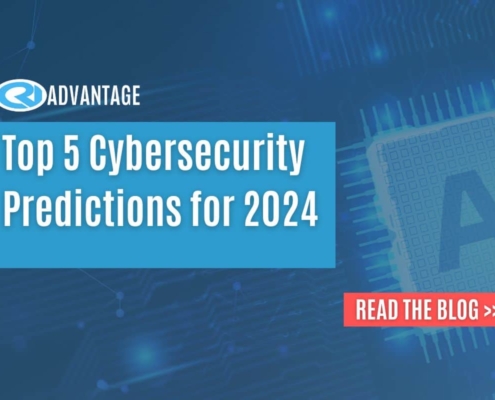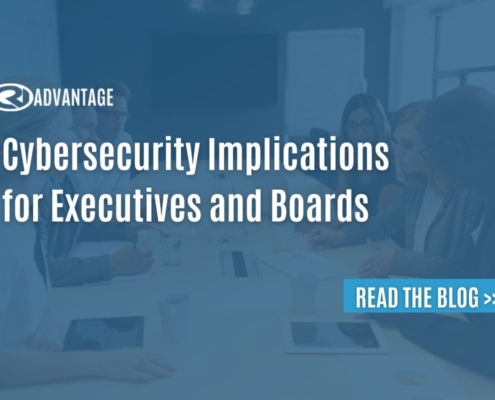 https://criadvantage.com/wp-content/uploads/2025/07/A-Beginners-Guide-to-Agentic-AI.jpg
1250
2000
Abstrakt Marketing
/wp-content/uploads/2024/11/CRI-Logo-Transparent.-blue.png
Abstrakt Marketing2025-07-08 06:41:372025-10-08 08:59:45A Beginner’s Guide to Agentic AI
https://criadvantage.com/wp-content/uploads/2025/07/A-Beginners-Guide-to-Agentic-AI.jpg
1250
2000
Abstrakt Marketing
/wp-content/uploads/2024/11/CRI-Logo-Transparent.-blue.png
Abstrakt Marketing2025-07-08 06:41:372025-10-08 08:59:45A Beginner’s Guide to Agentic AISecurity analysts warn that the exponentially growing number of cyberattacks will severely impact those organizations that fail to treat cybersecurity as a business investment.
To compete effectively, many small and mid-sized businesses tend to focus more on the products and services they develop and oftentimes lack the time and available resources to effectively tackle the ever-growing cybersecurity challenges of their core business. Unfortunately, the said cybersecurity challenges are growing in number and complexity, which makes small and middle-sized businesses more vulnerable to attacks than their enterprise counterparts that have entire departments dedicated to mitigating security threats.
According to cybersecurity analysts, the upcoming year comes with a new set of cybersecurity challenges for businesses. In this blog post, we will explore the top five security predictions, what they mean for your business and what tactics you can employ to ensure greater resilience in reducing the impact of more severe cyberattacks.

Prediction #1: Privacy regulations – customer privacy rights regulations will cover 5 billion citizens and over 70% of global GDP
While GDPR was the first significant consumer privacy regulation, others quickly followed. As of today, there are multiple government regulations that require businesses to protect customer rights, including Turkey’s Personal Data Protection Act (KVKK), Brazil’s General Personal Data Protection Act (LGPD), and California’s Consumer Privacy Act (CCPA). The scope of these laws means that you will manage multiple data protection laws in various jurisdictions, and customers will want to know what kind of data you collect from them and how it is used. This also means that you need to focus on automation of your data privacy management system. As for how to do this, basically, using GDPR, you can standardize security operations and then tailor them to individual jurisdictions.
Prediction #2: Unified security – enterprises will unify web, cloud services, and private application access
Organizations are turning to optimization and consolidation. iSecurity leaders typically manage dozens of tools, but they plan to reduce that number to even less than 10. From this perspective, SaaS will become the preferred delivery method, and consolidation will affect hardware adoption times. It is expected that 80% of enterprises will adopt integrated security service edge (SSE) solutions that will enable them to effectively unify access to the web, cloud, and private applications from a single, centralized platform.
“One of the key trends emerging from the pandemic has been the broad rethinking of how to provide network and security services to distributed workforces,” said Garrett Bekker, senior research analyst, security, in his research report.
Prediction #3: Organizations will use cybersecurity risk as a primary determinant in conducting business and transactions with third parties
Since cyberattacks related to third-party transactions and business engagements are on the rise, moving forward, businesses and investors alike will use cybersecurity risk as an essential factor in evaluating opportunities. Organizations are increasingly looking at cybersecurity risks during business deals, including mergers and acquisitions and vendor agreements. As a result, there may be requests for more data about a partner’s cybersecurity program through surveys or security ratings. This prediction implies that moving forward, cybersecurity should be prioritized as a business investment and not an IT issue.
Prediction #4: Strict ransomware regulations imposed by nation-states
According to security experts, 30% of nation-states will pass legislation regulating ransomware payments, fines, and negotiations by 2025, up from less than 1% in 2021. Law enforcement agencies recommend not paying because doing so encourages continued criminal activity. Gartner reports that only 8% of organizations that pay ransom manage to recover all their data.
Prediction #5: Shift of accountability – executive responsibilities
Organizations now understand that cybersecurity is a business issue and not just an IT issue. Experts predict a shift in formal cybersecurity accountability, with 50% of C-level executives having cybersecurity performance requirements built into their contracts by 2026. Just like the board of directors began tracking the environmental, social, and governance (EGS) performance of their CEOs and indexing their salaries based on these metrics, CIOs will be held accountable for the security of the organization.
Conclusion
Cybersecurity is no longer a purely IT challenge to tackle – one that requires investment in IT infrastructure – it’s a business investment that will determine which businesses will be able to compete in the market meaningfully. With the privacy implications of an all-hybrid set of interactions, the rise in ransomware incidents, and cybersecurity risks in conducting third-party transactions, more and more businesses of all sizes will be required to reevaluate their current cybersecurity strategy completely.
While enterprises have the available resources and capital to be compliant with the ever-increasing regulations and mitigate cyber threats, small and middle-sized businesses will require a trusted partner to guide them through 2023 and beyond. If you are looking for such a partner, don’t hesitate to contact CRI Advantage for a free consult!
The first step: complete your cybersecurity blueprint exercise
Uncover the strengths and weaknesses of your current cyber efforts.
Share This Post
More Like This
 https://criadvantage.com/wp-content/uploads/2025/07/A-Beginners-Guide-to-Agentic-AI.jpg
1250
2000
Abstrakt Marketing
/wp-content/uploads/2024/11/CRI-Logo-Transparent.-blue.png
Abstrakt Marketing2025-07-08 06:41:372025-10-08 08:59:45A Beginner’s Guide to Agentic AI
https://criadvantage.com/wp-content/uploads/2025/07/A-Beginners-Guide-to-Agentic-AI.jpg
1250
2000
Abstrakt Marketing
/wp-content/uploads/2024/11/CRI-Logo-Transparent.-blue.png
Abstrakt Marketing2025-07-08 06:41:372025-10-08 08:59:45A Beginner’s Guide to Agentic AI https://criadvantage.com/wp-content/uploads/2025/04/Smiling-male-employees-discussing-cooperation-planning.jpg
1250
2000
Abstrakt Marketing
/wp-content/uploads/2024/11/CRI-Logo-Transparent.-blue.png
Abstrakt Marketing2025-04-04 09:19:322025-10-08 08:59:47How ServiceNow Supports Scalable IT Solutions for Growing Businesses
https://criadvantage.com/wp-content/uploads/2025/04/Smiling-male-employees-discussing-cooperation-planning.jpg
1250
2000
Abstrakt Marketing
/wp-content/uploads/2024/11/CRI-Logo-Transparent.-blue.png
Abstrakt Marketing2025-04-04 09:19:322025-10-08 08:59:47How ServiceNow Supports Scalable IT Solutions for Growing Businesses https://criadvantage.com/wp-content/uploads/2024/12/Blog-Format-16-1-1.jpg
800
1200
Nate Riggins
/wp-content/uploads/2024/11/CRI-Logo-Transparent.-blue.png
Nate Riggins2024-06-25 18:20:492025-10-08 08:59:525 Signs Your Business Needs a Virtual CISO
https://criadvantage.com/wp-content/uploads/2024/12/Blog-Format-16-1-1.jpg
800
1200
Nate Riggins
/wp-content/uploads/2024/11/CRI-Logo-Transparent.-blue.png
Nate Riggins2024-06-25 18:20:492025-10-08 08:59:525 Signs Your Business Needs a Virtual CISO
CRI Advantage Honored as ServiceNow’s Consulting and Implementation Partner of the Year – Premier Segment, Americas Region
CRI, Press Releases https://criadvantage.com/wp-content/uploads/2024/12/Blog-Format-16.jpg
800
1200
Nate Riggins
/wp-content/uploads/2024/11/CRI-Logo-Transparent.-blue.png
Nate Riggins2024-02-14 04:50:572025-10-08 08:59:542024 Valentine’s Day Scams
https://criadvantage.com/wp-content/uploads/2024/12/Blog-Format-16.jpg
800
1200
Nate Riggins
/wp-content/uploads/2024/11/CRI-Logo-Transparent.-blue.png
Nate Riggins2024-02-14 04:50:572025-10-08 08:59:542024 Valentine’s Day Scams https://criadvantage.com/wp-content/uploads/2024/12/Blog-Format-13-1-1.jpg
800
1200
Nate Riggins
/wp-content/uploads/2024/11/CRI-Logo-Transparent.-blue.png
Nate Riggins2023-12-01 00:30:482025-01-09 12:53:30Top 5 Cybersecurity Predictions for 2024
https://criadvantage.com/wp-content/uploads/2024/12/Blog-Format-13-1-1.jpg
800
1200
Nate Riggins
/wp-content/uploads/2024/11/CRI-Logo-Transparent.-blue.png
Nate Riggins2023-12-01 00:30:482025-01-09 12:53:30Top 5 Cybersecurity Predictions for 2024 
CRI Advantage Achieves Recertification for ISO 27001:2022, ISO 9001:2015, and ISO 20000-1:2018
CRI, Press Releases https://criadvantage.com/wp-content/uploads/2024/12/Blog-Format-12-1-1.jpg
800
1200
Nate Riggins
/wp-content/uploads/2024/11/CRI-Logo-Transparent.-blue.png
Nate Riggins2023-11-21 21:48:232025-10-08 08:59:54Navigating Cyber Monday Deals Safely in the Face of Top Cybersecurity Scams
https://criadvantage.com/wp-content/uploads/2024/12/Blog-Format-12-1-1.jpg
800
1200
Nate Riggins
/wp-content/uploads/2024/11/CRI-Logo-Transparent.-blue.png
Nate Riggins2023-11-21 21:48:232025-10-08 08:59:54Navigating Cyber Monday Deals Safely in the Face of Top Cybersecurity Scams https://criadvantage.com/wp-content/uploads/2024/12/Blog-Format-7-1-1.jpg
800
1200
Nate Riggins
/wp-content/uploads/2024/11/CRI-Logo-Transparent.-blue.png
Nate Riggins2023-09-28 16:31:542025-10-08 08:59:57Cybersecurity Implications for Executives and Boards
https://criadvantage.com/wp-content/uploads/2024/12/Blog-Format-7-1-1.jpg
800
1200
Nate Riggins
/wp-content/uploads/2024/11/CRI-Logo-Transparent.-blue.png
Nate Riggins2023-09-28 16:31:542025-10-08 08:59:57Cybersecurity Implications for Executives and Boards
ServiceNow IT solutions tailored to your industry-specific needs.





